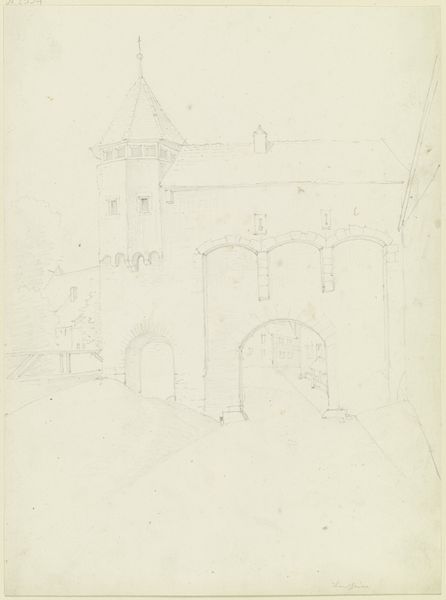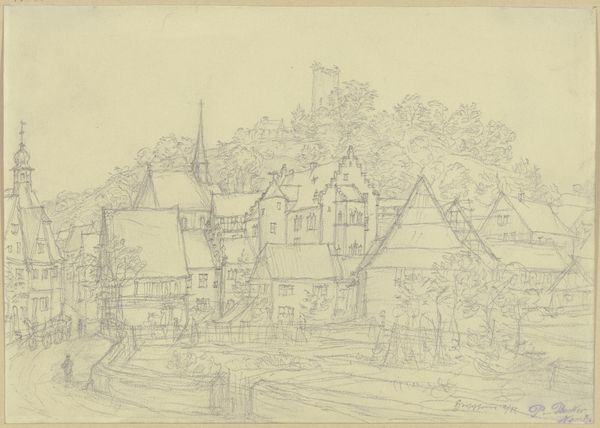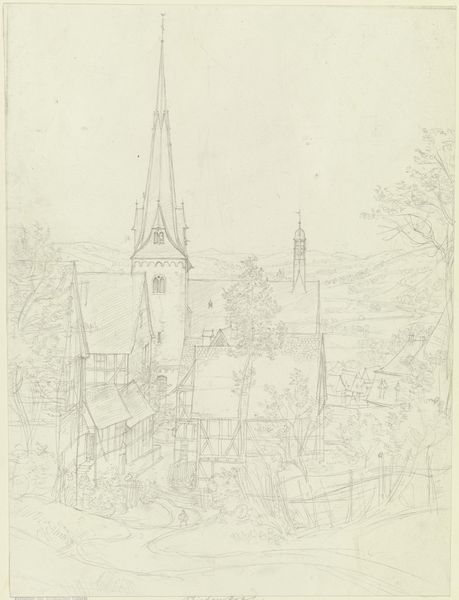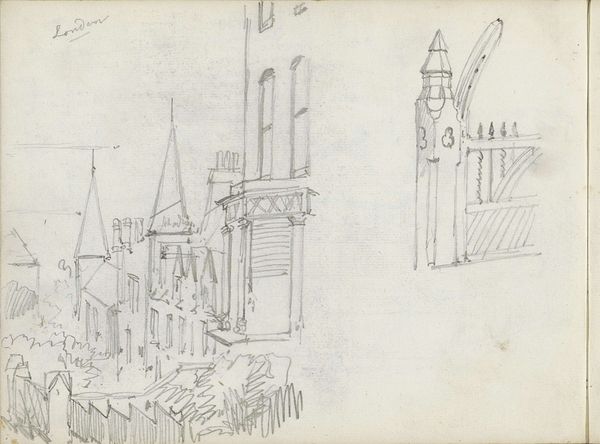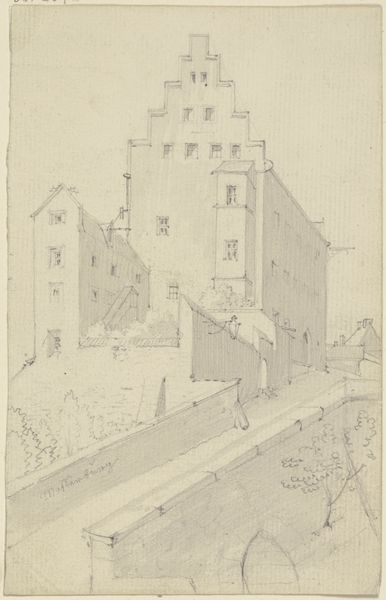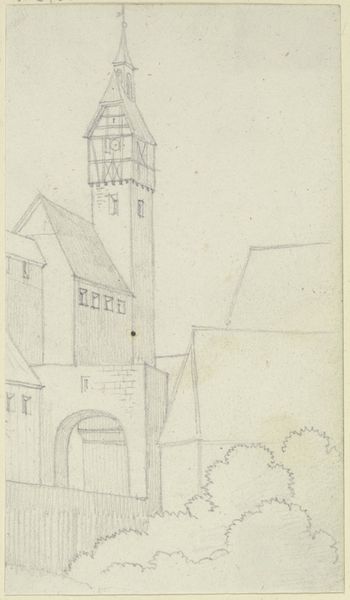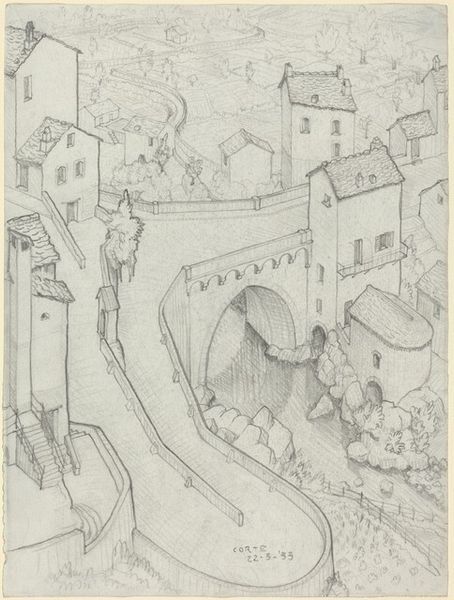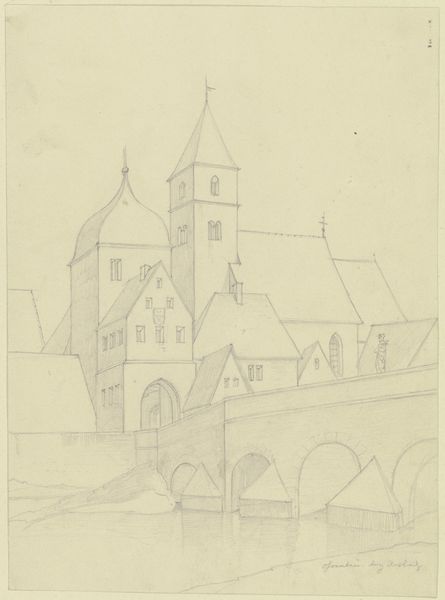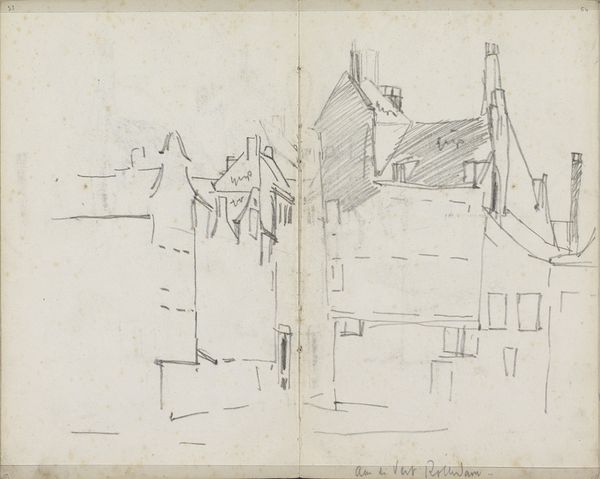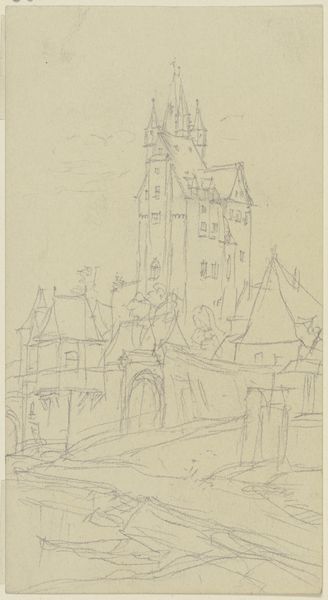
drawing, paper, pencil, architecture
#
drawing
#
16_19th-century
#
landscape
#
paper
#
german
#
pencil
#
architecture
Copyright: Public Domain
Curator: This is Karl Ballenberger's "Innenhof der Nürnberger Kaiserburg," a pencil drawing on paper, housed here at the Städel Museum. It depicts a courtyard view of the Nuremberg Imperial Castle. Editor: It feels sparse. Almost ghostly, wouldn't you say? The stark pencil lines give it an ethereal, unfinished quality, as if the castle is still being dreamed into existence. Curator: Perhaps, but there's also a sense of historical weight here. The Nuremberg Imperial Castle, for centuries, stood as a symbol of imperial power within the Holy Roman Empire. Understanding its physical presence helps us interrogate concepts of sovereignty, authority, and the ways in which architecture itself perpetuates particular ideologies. Editor: I’m struck by the artist's choice of medium. Pencil, especially in a work of this size, seems almost too delicate, too provisional, for such a monumental subject. It hints at the labor involved – each line meticulously placed, the subtle gradations achieved through countless strokes. What about the availability of graphite in the 19th century, and what might that tell us about artistic production at the time? Curator: That's an interesting point. Pencil as a democratic medium, accessible even… But consider also the gendered dynamics: Were women artists relegated to the so-called 'lesser' medium of drawing because access to oil paints, studios, and patronage were structurally limited? This artwork then speaks not only about the Castle but the artist and their particular constraints within 19th-century Nuremberg. Editor: Right, and the deliberate precision highlights craft. We're reminded of the architectural drawings that served as blueprints for these structures themselves. And I see Ballenberger has signed at the bottom – "Nürnberg" no less, really emphasizing the process and context. Curator: Absolutely. This drawing invites us to explore complex relationships: between power and place, history and representation, medium and message, even art and social justice. Editor: It pushes beyond romanticized notions of the castle. It is rendered through specific materials used with labor – forcing us to consider its historical and contemporary context through materiality. I find that more compelling than pure aesthetic appreciation. Curator: It underscores how something as seemingly simple as a drawing on paper can become a rich site for interrogation. Editor: Exactly. It prompts us to be more critically conscious.
Comments
No comments
Be the first to comment and join the conversation on the ultimate creative platform.


